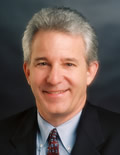Why We're Giving The Firefighters A Raise
As you may have heard by now, next Monday (8/4), the City Council is scheduled to approve a new contract with our city firefighters than includes both a raise and an increase in their pension benefits.
In such a bad budget year, I’m sure this will come as a shocker to most people. After all, this new contract will cost us more than $1 million per year. And I think I know what the reaction will be:
How dare they, especially after imposing the 911 fee?
They should be cutting spending, not increasing it! No wonder they need all that fee money!
The firefighters’ pensions are already pretty cushy!
It’s just payback to the firefighters union for campaign contributions!
All fair comments. But there are very good reasons why we are giving the firefighters a better deal – even in a bad budget year when we increased fees on lot of other things.
Most people think we’re just cutting the budget. But we’re doing more than that. At the same time that we are restraining spending, we’re also reprioritizing how the money is spent, so it goes to higher-priority items.
And the Fire Department is a high priority – one that is at risk if we don’t improve the compensation package. No matter what I or anybody else thinks about how good our firefighters have it, we’ve fallen far behind Ventura County, Oxnard, and Santa Barbara in both pay and pensions. In dealing with the future of our Fire Department, we have three choices:
-- Pay through the nose to merge with Ventura County Fire. Because the County pays better than the City does – and because they have no motivation to merge except on their terms – this would cost a fortune. The Fire Department currently costs us $20 million a year. Merging with County Fire would probably cost us $30 million a year.
-- Resign ourselves to being a “farm team”. We could not improve the compensation package – or we could even cut the pensions and salaries – but the net result would be a much lower-quality department. We might have to give up the requirement that firefighters be emergency medical technicians; and we’d probably lose most of our promising recruits to the county after a couple of years. In other words, our city firefighters would be younger and greener, kind of the like the ambulance technicians in town.
-- Invest some money in improving compensation in order to stay competitive. We don’t have to gold-plate our Fire Department to compete with the County. People like working for our Fire Department. All we have to do invest enough money that good people come to work for us and then stay. That’s what we’re trying to do with this new contract.
Earlier this year, we made a deliberate decision not to simply cut the budget across the board. We decided we were not going to sacrifice our goal of raising salaries and benefits in key areas where we knew we were far behind. Instead, we identified things the City couldn’t justify spending money on and eliminated those instead.
In other words, part of the reason we worked so hard to cut the budget this year was that we would have enough money for high-priority items like firefighter salaries.
Also – and I know a lot of people won’t believe me when I say this – we’re not using the 911 fee money to give the firefighters a raise. That money is reserved for hiring additional police officers and firefighters so that we cut reduce the response times to 911 calls. We didn’t even include the 911 money in the 2008-2009 budget. The money that we are using to provide the firefighters with a new contract is coming out of the money we already have – the increases in property tax revenue that we have obtained over the last year, plus the money we cut from other programs.
I wish all this were easier to accomplish, but it’s not. Remember that since I took office, we’ve faced a series of fiscal challenges.
First, we had to erase a $9 million budget deficit dating back to the 2003-04 fiscal year. We set a goal of balancing the budget in three years, then did it in two. And we’ve made tough cuts this year to keep the budget balanced even as our actual revenue has gone down.
Second, we had to add police officers and firefighters without the benefit of the sales tax revenue from Measure P6, which failed (with 62% of the vote!) in 2006. We used all of our 2007-08 property tax revenue growth to add the first group of officers. And we will use the 911 fee revenue to add many more, focusing on increasing response time.
We’re not out of the woods yet. It’ll be a while before the economy turns around, and we’re likely to see one or two more years of stagnant revenue in the meantime. And we all know that we have to work hard to get more revenue – especially more sales tax revenue – in order to stay competitive. That’s why we’re working so hard on downtown, on trying to bring retail back to the north end of the Pacific View Mall, on adding auto dealers at the auto center, and on targeting specific retailers we want like Best Buy.
But I’m proud of what we’ve done. I think we have our priorities straight – balance budget and have an outstanding public safety force – and I hope we can stay competitive in the future.
